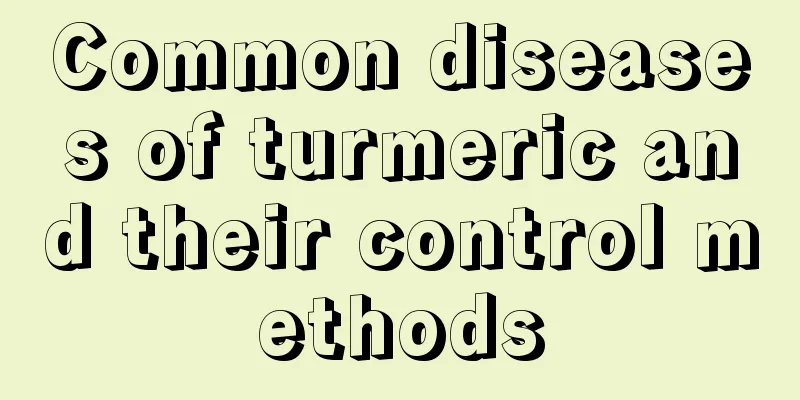Common diseases of turmeric and their control methods

Common diseases of green cloud grass: leaf spotSymptoms of leaf spot disease of turmericThe affected leaves of the green clover initially appear as circular black spots, which then expand into circular or nearly circular shapes. The edges of the spots are dark brown, the center is gray-black with small black spots, and the spots expand rapidly, and the leaves eventually turn black, dry up and die. Green cloud grass leaf spot disease prevention and control methodsIf diseased plants are found, they should be immediately isolated and sprayed with pesticides, or cut off and burned in a centralized location. Use 1000 times diluted 50% carbendazim, 1000 times diluted 50% thiophanate-methyl, 200 times Bordeaux mixture and other pesticides for spraying for prevention and control. Leaf spot disease caused by excessive watering or excessive humidity can be controlled by spraying 300-400 times diluted 50% mancozeb aqueous solution, 800-1000 times diluted 70% thiophanate wettable powder and other pesticides in the early stage of the disease. Common diseases of emerald green grass: powdery mildewSymptoms of powdery mildew of green grassGreen cloud grass is a foliage plant, but it also blooms. Powdery mildew occurs on leaves, young stems, pedicels, buds, petals and other parts of the body. In the early stages, it appears as small, irregular yellow-green spots with unclear edges. Then the lesions continued to expand, white powdery spots appeared on the surface, and finally countless black spots grew there. The infected area turns gray, covering the surface in a continuous patch, with unclear edges, and is dirty white or light grayish white. When the damage is severe, the leaves shrink and become smaller, the tender shoots become twisted and deformed, and the flower buds do not bloom. Methods for controlling powdery mildew of emerald green grassWhen the disease is at its peak, spray 1000 times diluted 15% triadimefon, 200 times diluted 2% antimycotic aqueous solution, and 1000 to 1500 times diluted 10% polyoxin. Repeated use of traditional medicines will cause the bacteria to produce antibodies, which will greatly reduce their effectiveness, so alternating use is recommended. Alternatively, you can also use 1000 times diluted white wine (35% alcohol content), spray it once every 3 to 6 days, spray 3 to 6 times continuously, and rinse the leaves until there is no white powder. |
<<: Diseases and their control of strawflower
>>: Common symptoms and solutions for Ruogeshi
Recommend
Can purple-leaf plum be planted in the yard?
Can purple-leaf plums be planted in the yard? Pur...
How to water the succulent Thor
How much water to pour Thor is a drought-resistan...
Advantages and disadvantages of Godmother Rose
The flower of the godmother rose looks like a cab...
What is the flower language of a bunch of red
1. The morphology of this plant This is a taller ...
What soil is good for growing Milan?
1. Acidity and alkalinity This kind of plant need...
How to grow ornamental pumpkins in pots
Selection of ornamental pumpkin varieties Golden ...
The efficacy and contraindications of black tea
1. Refreshing Black tea has a good refreshing eff...
How long is the growth cycle of mint?
Introduction to Mint Growth Mint likes to grow in...
What can be planted in rural areas to make money without worrying about sales? What is the most profitable and stable plant currently?
What to plant in rural areas to make money Nowada...
How many kilograms of Fritillaria per mu
Fritillaria yield per mu Fritillaria usually star...
Characteristics of peach blossom
1. Appearance characteristics There are many vari...
What flowers are suitable for growing in Guangzhou? What are the city flowers and trees?
1. Climate characteristics of Guangzhou Guangzhou...
What flowers are suitable for growing in Jixi? What are the city flowers and trees?
1. Climate characteristics of Jixi Jixi has a tem...
How to propagate crystal anthurium
1. Cutting Different varieties of anthurium have ...
What herbs are suitable to plant in autumn?
Why is vanilla planted in autumn? Overcoming Weed...









